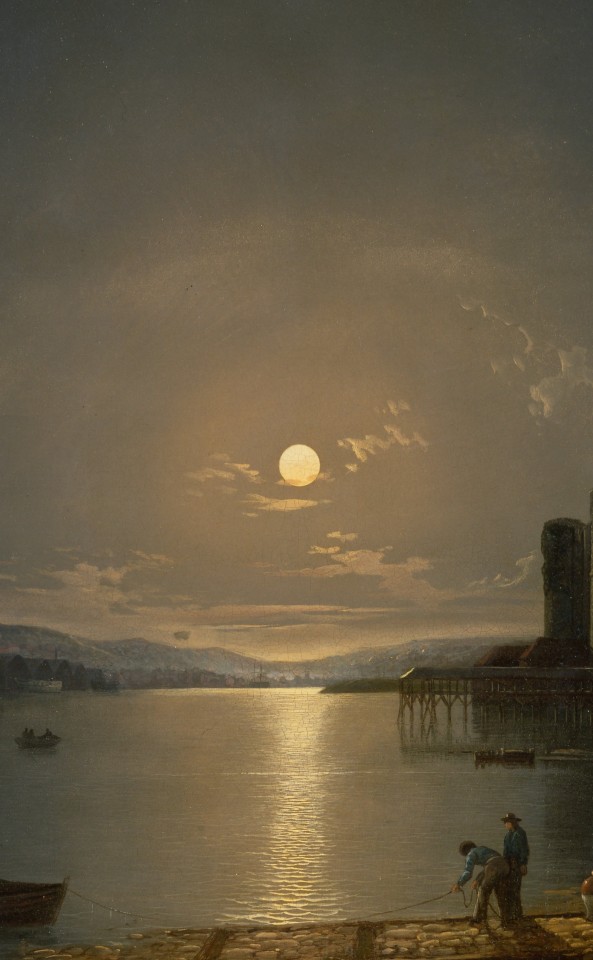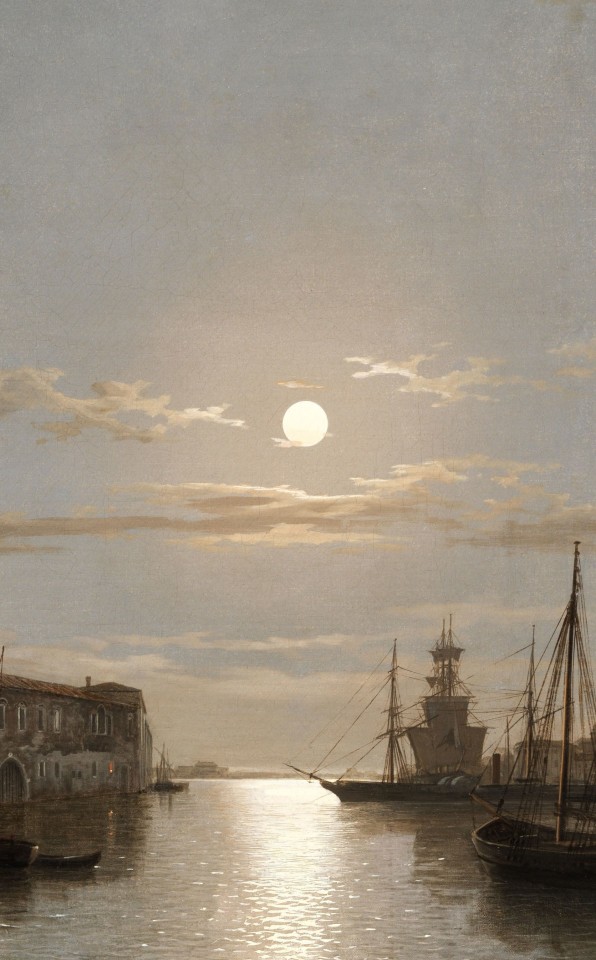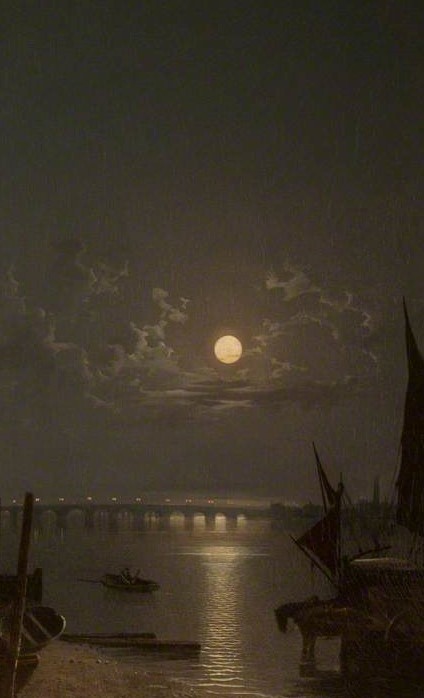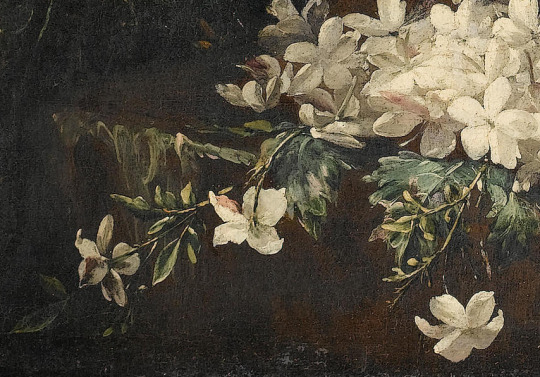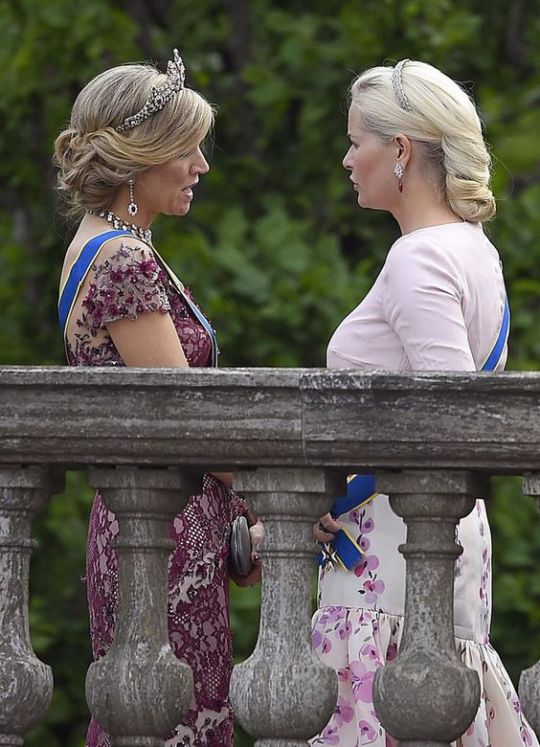Text
"Monarchy can easily be 'debunked', but watch the faces, mark well the accents of the debunkers. These are the men whose taproot in Eden has been cut -- whom no rumor of the polyphony, the dance, can reach – men to whom pebbles laid in a row are more beautiful than an arch." - C.S. Lewis

0 notes
Photo
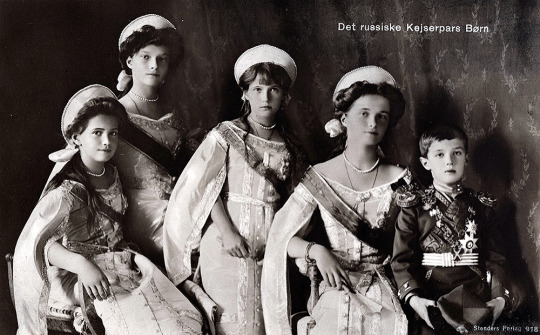


Series: OTMA in court dress with their brother Alexei.
67 notes
·
View notes
Text
Monarchy in America: Why It Cannot Be Done
Nearly every country in the world has at least one monarchist movement within it. From the Spain to Lesotho, to Iran to Indonesia, monarchies continue to live in many different forms and find support with everything from restorationist to preservationist groups. Curiously, the United States of America also has numerous monarchist groups within it, some representing the whole nation and some only a state or territory. While it may be a comforting thought to some to find solace from the intense political world we see engulfing the United States today, this dream cannot be realized for several very important reasons.
Before jumping to the reasons this idea cannot come to fruition in America, let us consider what an American monarchy would look like: it would more than likely have been founded by an influential American family with deep roots back to the days of the earliest settlers; this family will have attained wealth, status, connections, and proven themselves industry leaders; they will have a will to lead and a will to pass on American culture and traditions; they will embody the true spirit of American freedom, both personal and economic. If a single family could be identified to possess all of these values, they could theoretically be a viable candidate for the monarchy. Assuming, of course, Americans could overcome the obstacles explained next.
The first of these reasons is that America was founded with intent to never become a monarchy, though some of the Founding Fathers like John Adams acknowledged the inability to succeed in the long haul and bloodiness of democracy. A clause in America’s Constitution known as the Guarantee Clause ensures that the leader of the nation is always determined by vote. It prevents the development of a monarchy or aristocracy within American states, even if voted on by the majority (https://constitutioncenter.org/interactive-constitution/interpretation/article-iv/clauses/42). While this is the legalistic issue with the idea of forming an American monarchy, perhaps the more important issue is the second:
Current American culture cannot support the rule of a monarchy. Too much of the American spirit is still rife with pride in becoming independent of monarchist rule. In a nation that is used to a constant change in power every four years, to have a consistent ruler would be almost unthinkable. Americans are too used to change to ever be at ease with consistency. Though John Adams said, “There is nothing I dread so much as a division of the republic into two great parties, each arranged under its leader, and concerting measures in opposition to each other. This, in my humble apprehension, is to be dreaded as the greatest political evil under our Constitution,” this is exactly what has happened to the American system. A nation divided by race, creed, or personal persuasion cannot stand. One party or the other must always be in power and acting in favor of their group to retain said power, instead of doing what would truly be best for the nation. Americans have become reliant on a new form of tribalism, from which they could not break free long enough to support a monarch. The American spirit is strong, though albeit occasionally misguided.
While a democracy is run by what is popular to the people at the current point in time, a monarchy is run by consistent values and is called to do what will be best in the long run, not the moment. Until America can estrange itself from who it has become, a monarchy is not possible.
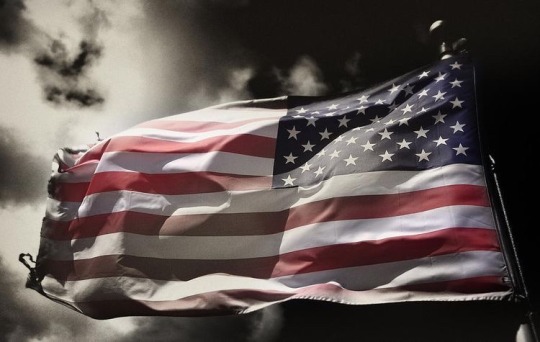
#america#united states#united states of america#usa#usa politics#american politics#monarchy#monarch#Monarchism#american monarchy#history of america#american history#constitution#constitutional#american constitution
7 notes
·
View notes
Text
On the subject of: Micronations
(Note: not written for political purposes, only information on an interesting topic. Not intended to be taken as a serious examination of living monarchies)
While not the most shining example of modern monarchy, monarchist micronations are still an example to be thoroughly examined when considering the implications of creating new monarchies and how they are accepted in the present world.
To start, let’s examine a few living micronations and how they came to be:
Sealand (est. 1967)
The Crown Dependency of Forvik (declared independent in 2008)
Kingdom of Talossa (est. 1979)
Principality of Seborga (claim extends back to Middle Ages)
Each of these has notable claim to independence and has garnered support for their actions both online and in person. Let us begin with examining the famous Principality of Sealand:
Founded in 1967 on a WWII-era Maunsell Fort (originally built to defend against Axis ships, submarines, and aircraft), it was declared a principality by British-born national Patrick “Paddy” Bates after being occupied for two years. The principality faced invasion by British authorities (despite being in international waters) was sacked by mercenaries hired by a former associate of Bates, saw the “Crown Prince” Michael taken hostage, and eventually was given its independence. This micronation is seen as a symbol of independent thought and innovation in the face of adversity. Today, Sealand continues to operate as a monarchist state and has sports teams, sells/produces titles of nobility, passports, currency, and is active in social media. One of the first modern micronations, it has certainly been an interesting addition to British history and has stood as inspiration for later micronations. More information can be found here:
https://sealandgov.org/
The Crown Dependency of Forvik was established in 2008 on a small island within the Scottish Shetland islands. While not as “legitimate” (as much as a micronation can be) as the others listed, this principality has never had a physical population and citizenship can only be obtained through yearly payments online. On the island, though, there are the remnants of a structure that cannot conclusively be identified. It could be anything from a Pictish era fort-type building to a sheep pen. In any case, ownership is disputed between Mark King, the original owner of the island, and Stuart Hill, or “Captain Calamity”, who had shipwrecked there while attempting to sail around the British Isles. The small island was declared a Crown Dependency, making it independent of the British Crown and self-governing. This, Hill claims, has inspired Shetland secessionists and he is actively involved in their movements. According to the Wikipedia page on the Crown Dependency of Forvik (for lack of better source): “Hill cited an arrangement struck in 1469 between King Christian I of Denmark/Norway and Scotland’s King James III, whereby Christian effectively pawned the Shetland Islands to James in order to raise money for his daughter's dowry. He contended that, as the loan was never repaid and no other legal agreement ever put in place, Shetland remains in a constitutional limbo, and should properly enjoy the status of Crown Dependencies such as the Isle of Man or the Channel Islands. The validity of this was not accepted by the British government.” Now, the Crown Dependency of Forvik serves as a symbol for Shetland secessionists who strive for independence of the British Crown. More information can be found here (with additional links to other references):
https://en.wikipedia.org/wiki/Forewick_Holm
The Kingdom of Talossa (Talossa is Finnish for “within the house”) was created in 1979 in Milwaukee, Wisconsin in the bedroom of 14 year old Robert Madison. It was documented in publications such as Wired and the New York Times garnering interest in the micronation and inspiring people to obtain Talossian “citizenship”. The Kingdom of Talossa developed to the point that the nation has its own language, with an extensive vocabulary based primarily on French. Though claiming an area of only 13 km2 in Milwaukee, the small country claims a population of around 250 individuals from multiple nations that maintain their citizenship primarily online. Talossa takes pride in its culture and language, and is arguably far more developed than other micronations. While the Kingdom of Talossa has a very spread-out “populace”, it is surprisingly close-knit with online forums, occasional physical meetings, and active cabinet involvement from members. For the purposes of this list, the Kingdom of Talossa may be considered the most complex of the given micronations. Between the developed culture, artificial language, and tight community, Talossa is a unique micronation. More information can be found here:
https://talossa.com/
The Principality of Seborga is perhaps the most legitimate on this list. Founded as a micronation in 1963 by Giorgio Carbone, he claimed that Vatican records showed Seborga as never having fallen under the jurisdiction of the House of Savoy, therefore making it a continually independent nation since 954 A.D. The same year as its refoundation, the people of Seborga voted to make Carbone their monarch, styling himself as His Tremendousness Prince Giorgio I of Serboga. The position is not hereditary, and every seven years a new head of state is voted on. After the death of Giorgio I, Italian-Swiss businessman Marcello Menegatto was elected Prince of Seborga and ruled until his abdication in 2019, after which his wife became ruler of Seborga as Princess Nina Menegatto. Although Seborga claims to have been recognized as a sovereign nation by Burkina Faso, which would make it the most legitimate of the nations in this list, and has a (supposed) history of independence dating back longer than a portion of modern nations, the validity of Seborga’s claims to statehood have been speculated by some to be a ploy in the interest of attracting tourists. Even if it isn’t a true, this micronation is unique in its claims compared to others. More information can be found here:
https://www.principatodiseborga.com/pds/
Small sovereignties that claim independence and have potential to grow over time have always existed and always will. The physical borders of a nation are never set in stone. Our world is perpetually shifting politically, which means that as time marches on, countries will appear and disappear; empires will take root and eventually be ripped from their soil; small nations will spring up and fade into the annals of history. Nothing of human design is eternal, nothing is for certain. Micronations offer a unique view into the every-changing world we live in, and are shining examples of humanity’s need for independence, community, and freedom.
#monarchy#Monarchism#Monarchist#monarchies#micronation#micronations#sealand#principality of sealand#principality#forvik#crown dependency#crown dependency of forvik#talossa#kingdom of talossa#kingdom#principality of seborga#seborga#countries#history#world history
11 notes
·
View notes
Photo
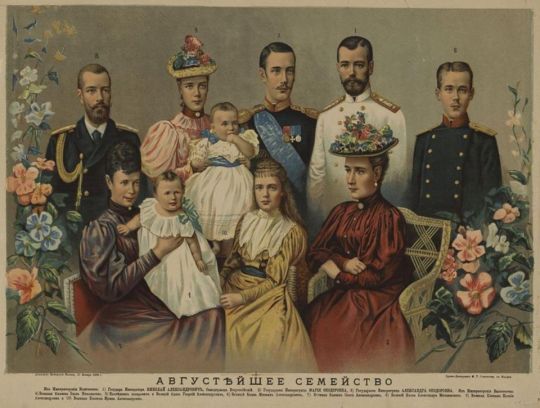
The last Russian Tsar Nicholas II with his immediate family.
Back row: Grand Duke Alexander Mikhailovich, Grand Duchess Xenia Alexandrovna with baby Princess Irina Alexandrovna, Grand Duke Georgiy Alexandrovich, Nicholas II., Grand DUke Mikhail Alexandrovich
Front row: Dowager Empress Maria Fyodorovna with baby Grand Duchess Olga Nikolaevna, Grand Duchess Olga Alexandrovna, Empress Alexandra Fyodorovna
74 notes
·
View notes
Text
“When annual elections end, there slavery begins.” - John Adams
No matter where you may be in the world, a change of power in America will affect your nation’s trade, power, politics, and the current culture of it. There is no security or certainty with democracy, and elections are farces, on every scale. They represent neither the will nor spirit of the people, but rather the few elite who have no regard for the inhabitants of the nation.
No matter who, where, or what you are, today is not a good day.
#royalty#monarch#monarchy#monarchist#royal#royalist#bring back monarchies#john adams#founding father#american election#election#democracy#democrats#america#amerika#america news
2 notes
·
View notes
Text
Everyday, this world slips farther back. Violence and bloodshed rule our streets, and murders take place without the bat of an eye. It seems that around festers nothing more than chaos and evil.
There was a time when the world wasn’t like this. When small communities flourished, the elites kept to themselves with actions that provided minimal impact on the lives of the common folk.
When innovation and culture were real. When culture was about maintaining traditions and making things beautiful. Fine craftsmanship and a will to improve one’s abilities were celebrated. When society was more than looking at a screen for interaction.
Monarchism is about more than a monarch. It’s about a culture focused on the real and beautiful, on family and community. No other system promoted those things in the same way.

6 notes
·
View notes
Text
This is quite obviously all hypothetical, and taken from other blogs and articles across the internet pertaining to Irish monarchy.
What would it look like, to resurrect a monarchy that’s been missing for over 800 years?
Ireland has always been a land of noble grandeur, one that has an eternal feel of opulence and mystery. The rolling green hills dotted with glens and stone cottages have long felt to hold an air of royalty, as if at any moment a medieval knight could appear, riding on his steed.
This beautiful land was once home to Gaelic kings and queens, before the arrival of the Anglo-Norman conquerors on the shores of Ireland. After the death of Ruaidrí Ua Conchobair, the last fully recognized High King of Ireland, no individual has been widely accepted as having the sovereign title of “King of Ireland” (sparing the recreation of the title in 1541 for union with the title “King of England”).
Ruaidrí passed in the year 1198, leaving at least 13 children to pass on his royal blood. Many people today have the ancestral means to claim the Kingship of Ireland, but not the social ability to garner enough attention or the leadership strengths to truly head a nation. Having the necessary blood is only half the battle. Resurrecting the monarchy of a nation as strong and independent as Ireland could prove a unique challenge, especially with so many individuals to choose as sovereign.
So how would this new monarch be selected? This is obviously not a complete list of the criteria, but these would definitely be a necessary start to said list:
Be of verifiable Irish ancestry
Show descent from last sovereign King of Ireland
Demonstrate leadership capabilities
Demonstrate a nationalist attitude towards Ireland and Irish culture
Have a strong knowledge of the Gaelic language and Irish history
Have the support of at least three other reigning monarchs and two members of deposed Houses
Be unafraid of the international media’s criticisms (which are inevitable)
Be willing to do whatever necessary for the good of Ireland.
Bringing back a monarchy isn’t impossible, or even improbable. A country like Ireland is completely capable of bringing back their royalty and once again being a strong, nationalistic monarchy.

76 notes
·
View notes
Text
Dimitri Malama, the soldier Tatiana Nikolaevna fell in love with.
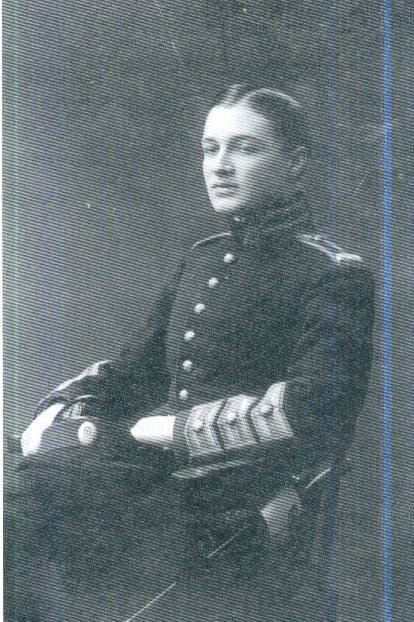
Dimitri Yakovlevich Malama was born on July 19th (August 1st) 1891 in Lozovatka, Ekaterinoslavskaya province, imperial Russia (modern-day Ukraine), to parents Yakov Dimitrievich Malama (1842-1912) and Elizabeth Ivanovna, née Kuzmitskaya. He had two older sisters, Vera Yakovleva born in 1887 (who went on to marry Russo-Georgian Prince Alexander Eristavi-Ksani) , and Valerina Yakovleva, born in 1888.
Dimitri’s father was a cavalry general in the Russia army. He was of an old, noble family from the Ukranian province of Ekaterinoslavskaya, and was a member of the military council as an advisor to the Tsar. In 1904-1906, he was the great general (viceroy) of Georgia. He was greatly adored by the people of Caucasus. He was buried at the family estate of Nezabudkina in the Ekaterinoslavskaya province.
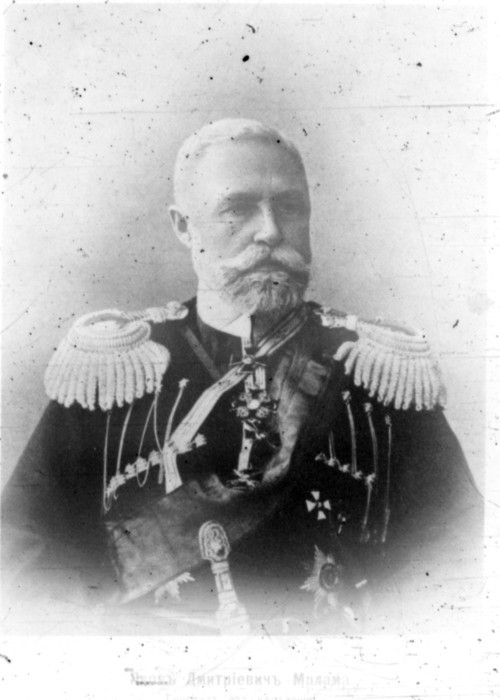
Yakov Dimitrievich Malama, a general, member of the state military coucil, and a personal advisor to the tsar. He was also the viceroy of Georgia.
Dimitri Malama was accepted into the Imperial Corps de Pages, the most renowned military academy in imperial Russia. It was hard to get in; You’d have to be a son of a nobleman, or a high-ranked military officer. Except by personal appointment of the Emperor or as a son of a Major-General killed in action, admission was only by a difficult competitive examination. Only the sons or grandsons of those in the top three levels of the Table of Rank were eligible to apply.

The Imperial Corps de Pages, a prestigious military academy in St Petersburg.
Students of the Corps de Pages carried out duties at court, as Chamberlain’s pages. These pages, who were only the best of the best of the academy, would be assigned to tasks such as attending and serving the Empress and the grand duchesses at all balls, gala dinners, official ceremonies, and other events where their presence was required by protocol. Empresses (widowed or acting) would be assigned two pages, and each grand duchess would be assigned only one. Furthermore, in the event of illness, another page was assigned. Thus, in 1896, when there were two empresses and nine grand duchesses, fourteen pages would serve.
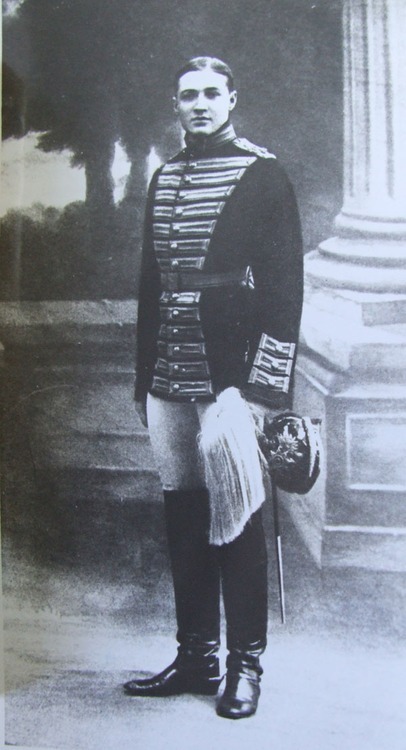
Dimitri Malama wearing the galla uniform of the senior students of the Corps de Pages in 1912. This was the uniform, Dimitri Malama would wear at state occasions, when he would serve one of the Empresses, or one of the Grand Duchesses.
Malama graduated on August 6th 1912, and was made a cornet in the Uhlan Lancer Guard Regiment of her Imperial Highness Empress Alexandra Fyodorovna. Graduates of the Imperial Corps de Pages had the privilege of being free to choose whatever regiment the graduate would like to serve in.
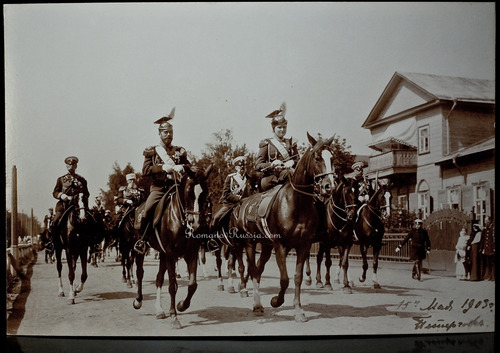
Nicholas II and Alexandra Fyodorovna at the Uhlan Regiment jubilee in 1903. Behind them are Baron Freedericks, minister of the Imperial court, Grand Duke Vladimir Alexandrovich and Prince Felix Yusupov Count Sumarokov-Elston, commander of cavalry and the Imperial guard.
In the first week of the WWI, Malama showed great heroism, when his regiment was attack by superior enemy forces. He was seriously wounded in the leg, but did not leave the battlefield. For this behaviour, he was awarded the ‘Golden Arms’, a golden sword with the inscription ‘for bravery’, personally by the Empress Alexandra Fyodorovna. He was afterwards brought to the Tsarskoye Selo hospital, and remained there until December 1914. Here, he properly met Tatiana Nikolaevna, the daughter of Tsar Nicholas II, who served as a nurse with her mother and her older sister, Olga, during the war. There is a chance that he might have met her before, seeing as he, in the last year of his education, served as a page to either one of the empresses, or one of the grand duchesses at court. Furthermore, his father held a high position in the administration of the empire, and Nicholas II must’ve known who Malama’s father was, as he was in the military council.
According to the memoirs of another soldier, Stepanov, who was also at the Tsarskoye Selo hospital, Malama was “young, ruddy and fair-haired”. He had won the first prize at the Stoverstnom, a horse race, on a cognac mare. In the battlefield, he’d distinguished himself, and shortly after, was seriously wounded. It struck remarkably conscientiously in the regiment’s attitude to service. He was also very dutiful, and was tormented by the thought of him being in the hospital, while others were out there fighting. In his memoirs, Stepanov also recalls that the Grand Duchess Tatiana often lingered at the bedside of Malama. “Usually, the grand duchess left the dressing room a long time before her mother, and passed through all the chambers. In the last chamber – Manama’s and mine – she’d wait for her mother. She always sat by Malama.”

Dimitri Malama at the Tsarskoe Selo hospital. Malama is the one seated, while Grand Duchess Tatiana stands behind him, smiling in her nurse’s uniform.
On October 12th, 1914, Malama gave the grand duchess a French Bulldog called Ortipo (the confusion of names is because the Cyrillic letter for p looks quite a lot like n). Olga Alexandrovna, Tatiana’s aunt and Nicholas II’s sister, often made fun of the Tatiana because of it. She wrote to Tatiana: “Tatiana which Lancer gave you a dog? You’re sitting on his bed, Olga [Nikolaevna] says. Very entertaining.”
But the Empress was seemingly sympathetic with the young soldier. One and a half year later, she wrote to her husband, the emperor: “My little Malama, Anya and I spent an hour last night, after dinner. In one and a half years, we have not seen him. He had matured, though still a lovely boy. I have to admit, he would make an excellent son-in-law. Why are foreign princes not like him? Of course, Ortipo needed to see her “father”.”
Tatiana mentions Dimitri Malama many times in her diaries. She calls him sweetheart Malama in her diary entries, and is horrified when he is discharged from the hospital. Tatiana would still serve at the hospital, while Malama would go back to the front.
After the October revolution, Malama went to the south to fight in the White Army. He ended up being a captain, and he fought bravely, with the same sense of duty as Stepanov had described in his memories. However, when the news of the shooting of Grand Duchess Tatiana, his courage changed, and it seemed he sought dead on the battlefields. After a few more courageous battles, he was killed in 1919 in a deadly attack in Tsarisyn, Saratov province, RSFSR.
If both Malama and Tatiana had lived through the revolution, there is a change that they would’ve married. After all, Olga Alexandrovna had herself married morganatic in 1916, to an officer named Kulikovsky, and other members of the family had also married non-princely men. As Malama himself was of the old nobility and as his father held a high position at court, the match could’ve been possible. After all, both Alexandra Fyodorovna and Nicholas II were content on letting their daughters choose their future husbands, and if Tatiana had insisted, she might have gotten permission to marry Malama. She was the favourite of her mother, after all.
268 notes
·
View notes
Text
What would it look like, to resurrect a monarchy that’s been missing for over 800 years?
Ireland has always been a land of noble grandeur, one that has an eternal feel of opulence and mystery. The rolling green hills dotted with glens and stone cottages have long felt to hold an air of royalty, as if at any moment a medieval knight could appear, riding on his steed.
This beautiful land was once home to Gaelic kings and queens, before the arrival of the Anglo-Norman conquerors on the shores of Ireland. After the death of Ruaidrí Ua Conchobair, the last fully recognized High King of Ireland, no individual has been widely accepted as having the sovereign title of “King of Ireland” (sparing the recreation of the title in 1541 for union with the title “King of England”).
Ruaidrí passed in the year 1198, leaving at least 13 children to pass on his royal blood. Many people today have the ancestral means to claim the Kingship of Ireland, but not the social ability to garner enough attention or the leadership strengths to truly head a nation. Having the necessary blood is only half the battle. Resurrecting the monarchy of a nation as strong and independent as Ireland could prove a unique challenge, especially with so many individuals to choose as sovereign.
So how would this new monarch be selected? This is obviously not a complete list of the criteria, but these would definitely be a necessary start to said list:
Be of verifiable Irish ancestry
Show descent from last sovereign King of Ireland
Demonstrate leadership capabilities
Demonstrate a nationalist attitude towards Ireland and Irish culture
Have a strong knowledge of the Gaelic language and Irish history
Have the support of at least three other reigning monarchs and two members of deposed Houses
Be unafraid of the international media’s criticisms (which are inevitable)
Be willing to do whatever necessary for the good of Ireland.
Bringing back a monarchy isn’t impossible, or even improbable. A country like Ireland is completely capable of bringing back their royalty and once again being a strong, nationalistic monarchy.

#monarch#monarchy#monarchist#monarchism#royal#royalty#royal aesthetic#royalty aesthetic#ireland#irish#irish history#irish royalty#king#queen#monarchs#bring back the monarchy#éire#gaelic#irish gaelic#resurrect the monarchies
76 notes
·
View notes
Text
“I would rather obey a fine lion, much stronger than myself, than two hundred rats of my own species” - Voltaire

#royal#royals#royalty#royalty aesthetics#king#kings#queen#queens#duke#duchess#monarchy#monarchist#imperial#royal family#tsar#tsardom#kaiser#kaiserin#kaiserreich#noble#nobility#restore monarchies#royalist#czar#royal aesthetic
11 notes
·
View notes
Text
The idea of resurrecting a monarchy is not a new one by any means. Monarchies have come and gone and there are always people who wish to see the old ones return (i.e. Ireland who lost its monarchy to the British in the 12th century, Scotland who lost theirs in the 16th, Germany/Prussia whose Kaiser was forced into abdication after WWI). Modern efforts towards monarchies are popular in Czechia, Russia, Brazil, and Germany. Jacobite ideals are still alive in Scotland. Germans advocate in favor of the Kaiser’s return. Large movements can be found in Brazil and Czechia for royal families to be reinstated.
Our power is quiet, but definitely existent.
2 notes
·
View notes
Photo

Interior of the Zwiefalten Abbey, in Germany.
527 notes
·
View notes
